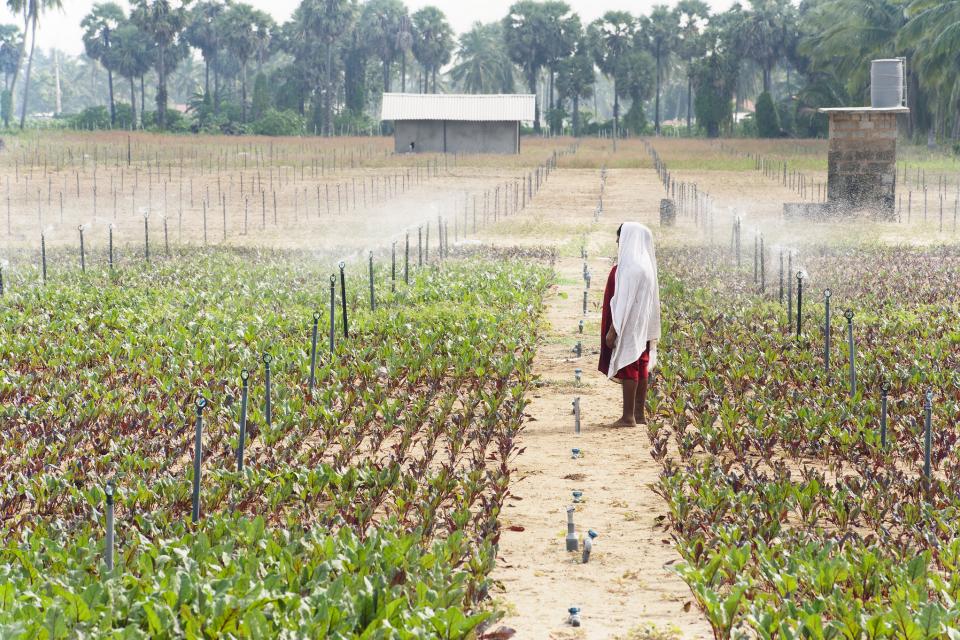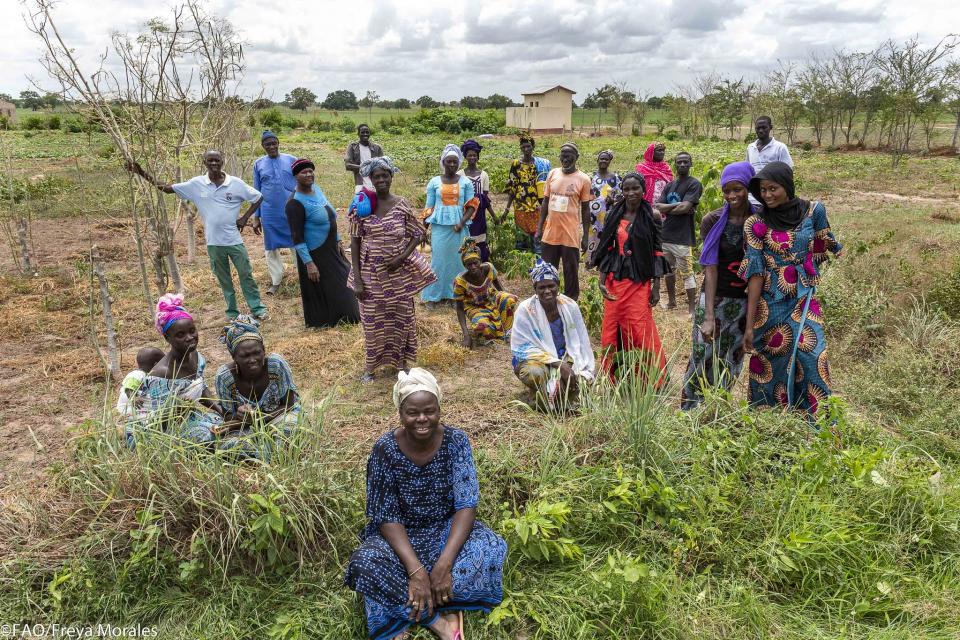Norms and institutional obstacles cause differences in women’s and men’s adoption of climate-smart agriculture
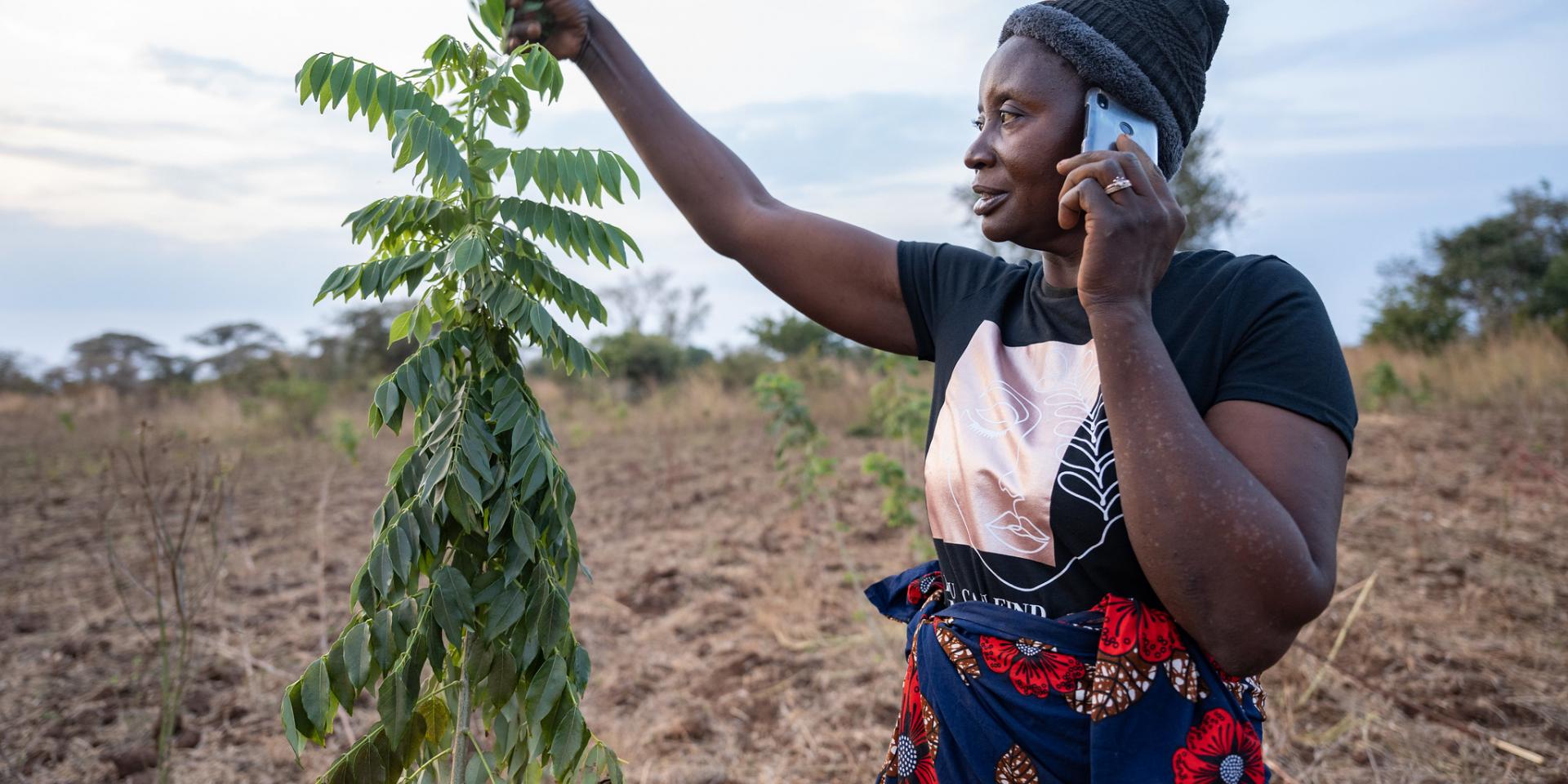 Photo: Kelvin Trautman/KANDS Collective.
Photo: Kelvin Trautman/KANDS Collective.
Key Messages:
- Deep-rooted social-cultural norms and institutional obstacles contribute to different levels of climate-smart agriculture adoption between women and men farmers.
- Multipronged approaches that bundle technical and social interventions are needed to address the obstacles.
- Addressing these obstacles can improve the gender-equitable uptake of climate-smart agriculture practices.
Climate-smart agriculture (CSA) is proposed to increase productivity, reduce emissions, and improve agricultural adaptation measures. Despite CSA practices being promoted to both women and men farmers, evidence indicates a gendered difference in the long-term uptake of CSA. This evidence suggests that the benefits of adopting CSA practices are not equitably distributed within the household. We reviewed literature on the intersection of CSA, gender equality and transformative change to understand how CSA interventions reduce gender inequalities, improve productivity and improve climate change adaptation and mitigation.
Socioeconomic norms and institutional barriers shape different long-term adoption of CSA
Findings from our forthcoming literature review indicate that entrenched social-cultural norms and institutional barriers create uneven gender relations that shape the differentiated uptake of and preferences about CSA practices . The uptake of CSA practices is influenced by age, wealth, caste, marital status and education.
Although women reportedly take up CSA practices faster than men, this adoption is often short-term and more focused on food security for their family’s welfare rather than for climate change–related reasons.
Gender roles: Studies show that women prioritize food crops over cash crops, and smaller livestock over larger livestock to provide for their family. Women prefer fruit trees for food security rather than timber trees for CSA. This choice makes women reluctant to adopt slow-maturing, weather-resistant crop variants promoted by CSA practices.
Lack of land: Land ownership influences effective engagement with and adoption of CSA practices. Women often face land ownership challenges, with weaker land rights, and they cultivate on marginal, small parcels with poor-quality soils. This lack of land can affect women’s access to credit and participation in CSA interventions directed explicitly at landowners. Studies, including this one, also found that women are reluctant to plant timber trees or replace trees and crops with slow-maturing variants as they may lose all benefits created by these practices after the dissolution of a marriage.
Uneven labor demands: Women face disproportionate on-farm and off-farm labor demands. Men’s outmigration has increased women’s labor demands at home and in the farms. Similarly, some promoted CSA interventions, such as conservation agriculture, are reported to have unintended consequences that may increase women’s workloads. Hence, women prefer CSA interventions that do not increase their workloads.
Restricted mobility: Financial constraints, spousal restrictions, caregiving responsibilities, safety concerns, and religious barriers restrict women’s mobility and, therefore, their ability to participate in some CSA practices. For example, in Kyengeza, Uganda, men are twice as likely as women to travel to purchase seeds or visit markets. Mobility restrictions also limit women’s opportunities to attend CSA extension training sessions.
Exclusion from strategic decision-making: Men predominantly control key agricultural decisions. Less than half of women participate in decisions about crop type, harvest timing, sales and farm-income spending. However, this is changing as men’s outmigration increases women’s labor demands and boosts women’s decision-making power at the household level. In various regions, women have taken charge of cropping patterns, herd regulation, crop diversification, and the adoption of drought-resistant variants, which impacts their adoption of CSA at the community level.
Uneven access to climate information: Men have superior access to weather-related early warning information and advisory services than women—influenced by literacy levels, income, distribution channels, and sociocultural norms. Ngigi’s study in Kenya established that men had more access to climate information services and had different preferences in pathways to access the information. Men also predominantly control access to and purchase media devices such as TVs, radios and mobile phones that transmit agro-climate information.
Unequal access to CSA technologies: CSA technologies, such as seed sowers and combine harvesters, can alleviate manual labor, as seen in Vietnam. Evidence suggests that machine planting in CSA activities can reduce women’s labor, potentially driving transformative change.
Exclusion from extension services: Women encounter greater barriers to accessing extension services, often directed to male landowners, who may share it with their wives. Men receive formal extension services, while women may receive training from informal channels like NGO trainers, farmers' clubs and religious community members.
Multipronged approaches bundling technical and social innovation can address root causes
Evidence shows that addressing the barriers to CSA practices for women is necessary for improved uptake. These barriers can be addressed through multipronged approaches that bundle social and technical interventions.
- Equal access and control over resources: Address discriminatory land laws, formalize women’s land ownership and educate women on their rights to ensure equal access of productive resources like land, water, seeds and other CSA inputs.
- Gender-sensitive technologies: Develop affordable, easy-to-use products and services that reduce women’s drudgery, such as direct-seeded rice and green manuring. Agro-climatic information should be disseminated through channels considering women’s needs, literacy and affordability, such as vernacular radio stations, drama, and women’s groups and networks. By involving women in developing CSA technologies, cultural compatibility and opportunities for adoption could be improved.
- Women in decision-making: Promote women as agents of change by ensuring that they participate in forums where strategic CSA decisions are made. This inclusive approach will help to prevent perpetuating gender inequality and improve the effectiveness of CSA practices.
- Norm awareness and disruption: Raise awareness among norm holders, including men, boys, religious leaders and extension officers, about the benefits of gender equality in adopting CSA. Engage with traditional institutions to disrupt gendered norms, potentially also improving women’s social positions.
- Intersectional gender-responsive research: Conduct gender research with intersectional analysis to tailor CSA practices. Involve the most vulnerable groups from the outset, considering factors such as age, education, social class, caste and marital status. Such factors shape individuals preference and ability to take up CSA practices.
Gender equity will benefit from addressing these barriers around CSA adoption
Our review identified several areas for further research:
- With the introduction of labor-saving technologies, it is essential to determine whose labor is saved, how and when it is saved.
- It is important to investigate how changing traditional preparation and post-harvest processes may devalue women’s knowledge and critical role in such activities
- There is a need to identify and mitigate the challenges arising from the mechanization of women’s activities.
##
Suggested citation:
Muneri, Eunice. 2023. Norms and institutional obstacles cause differences in women’s and men’s adoption of climate-smart agriculture. Nairobi, Kenya: CGIAR GENDER Impact Platform.
References
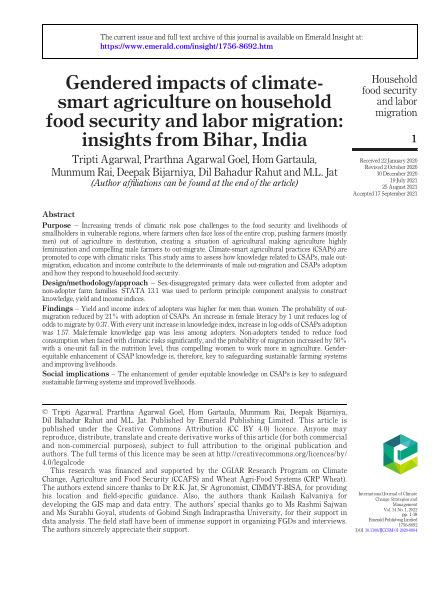
Gendered impacts of climate-smart agriculture on household food security and labor migration: insights from Bihar, India
Does women’s participation in agricultural technology adoption decisions affect the adoption of climate-smart agriculture? Insights from Indo-Gangetic Plains of India
Gender and institutional aspects of climate-smart agricultural practices Evidence from Kenya
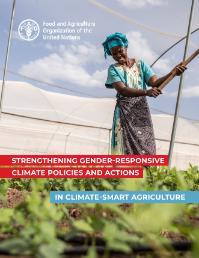
Strengthening gender-responsive climate policies and actions in climate-smart agriculture
FAO. 2022. Strengthening gender-responsive climate policies and actions in climate-smart agriculture. Rome.
Building a gender-transformative extension and advisory facilitation system in Sub-Saharan Africa
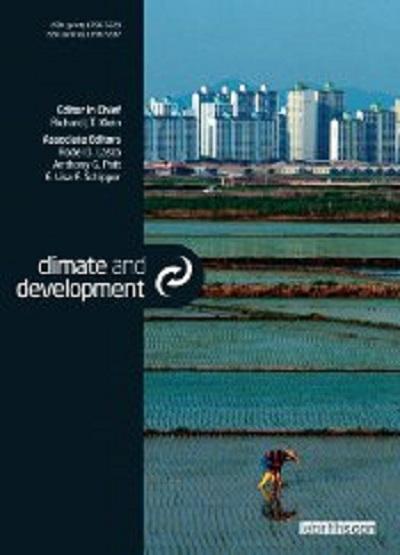
Understanding gender dimensions of agriculture and climate change in smallholder farming communities

Potential of climate-smart agriculture in reducing women farmers’ drudgery in high climatic risk areas
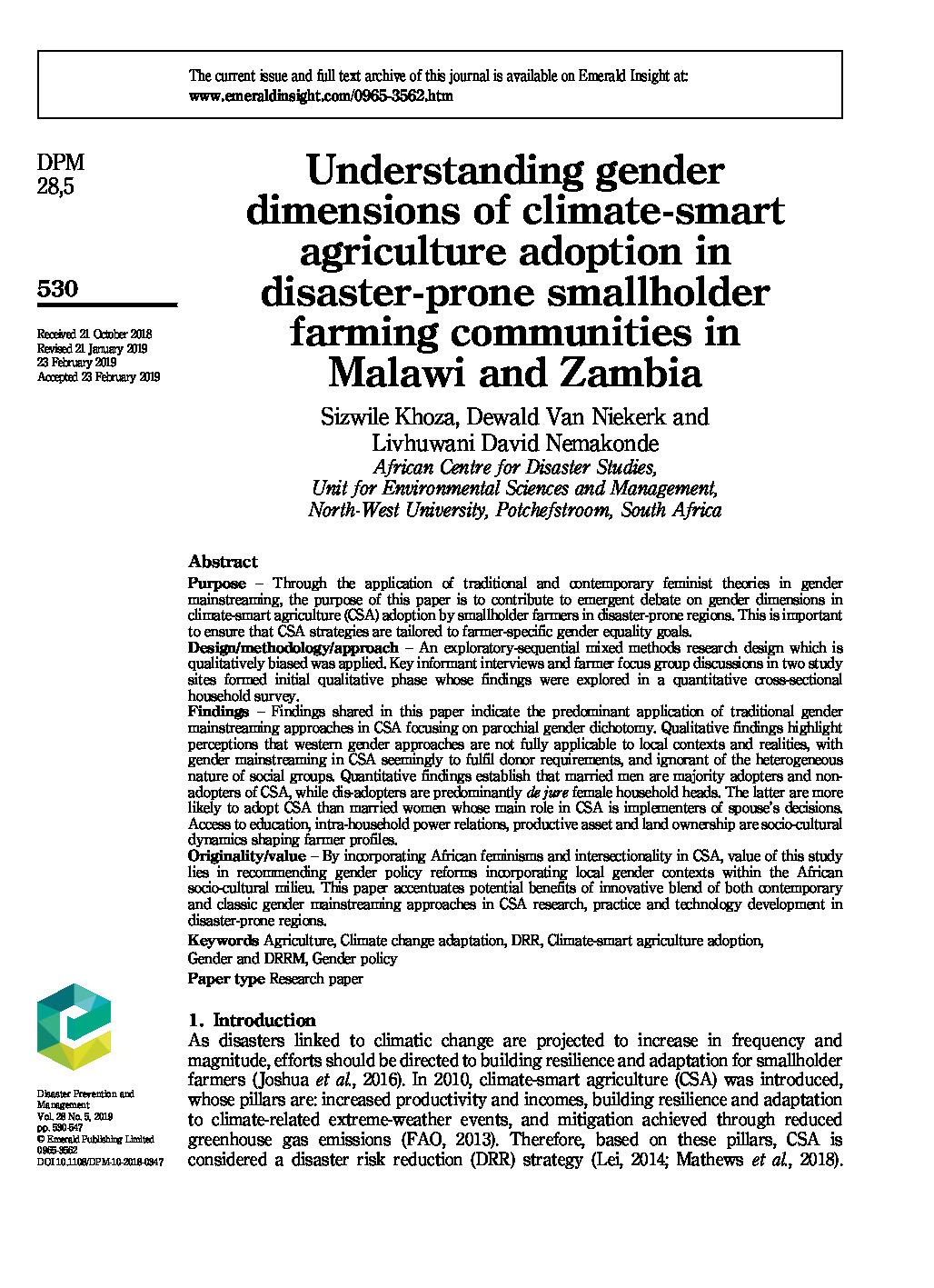
Understanding gender dimensions of climate-smart agriculture adoption in disaster-prone smallholder farming communities in Malawi and Zambia
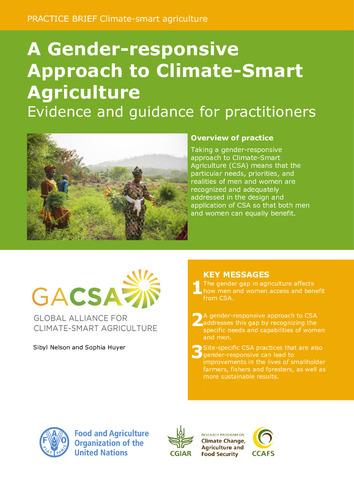
A Gender-responsive Approach to Climate-Smart Agriculture: Evidence and guidance for practitioners
Access to climate information services and climate-smart agriculture in Kenya: a gender-based analysis
Ngigi, M.W., Muange, E.N. Access to climate information services and climate-smart agriculture in Kenya: a gender-based analysis. Climatic Change 174, 21 (2022). https://doi.org/10.1007/s10584-022-03445-5

